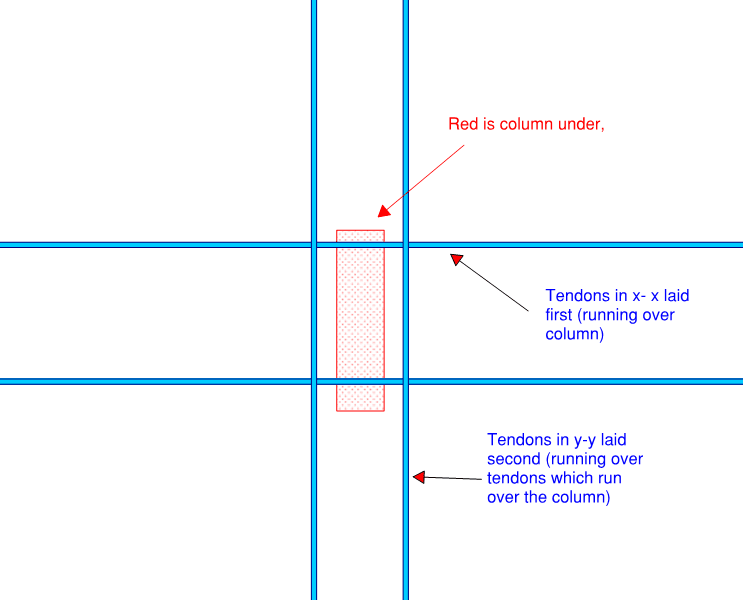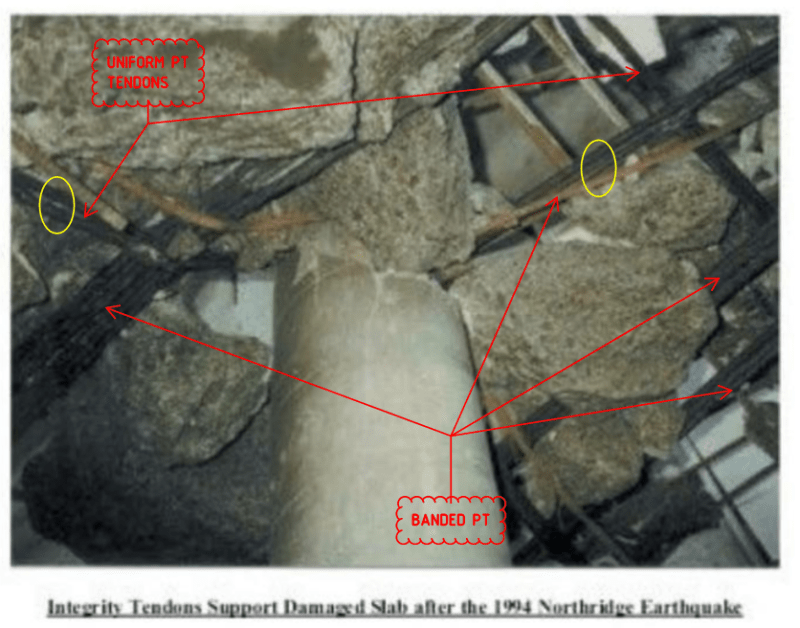Just want to bring back an old post by KootK that got no real answer: Integrity reo has just been introduced into our Australian concrete standards so I don't think many of us will have this figured out yet.
This is a tough one because transfer slabs really benefit from integrity reo since a failure in a transfer slab can be catastrophic, however trying to get adequate integrity reo over your columns seems like a huge ask.
It's almost as if this clause is pushing us away from designing flat plate transfer slabs by making it so unfeasible that no one is willing to use them anymore. Generally, on some of our transfer decks we transfer columns at ground floor that continue up to 15 stories (around 7000kn of load). It would be almost impossible to fit enough reo over your column in these cases.
Would love to hear from some people who have managed to satisfy this clause in a transfer slab, or if its generally left out of transfers.
This is a tough one because transfer slabs really benefit from integrity reo since a failure in a transfer slab can be catastrophic, however trying to get adequate integrity reo over your columns seems like a huge ask.
It's almost as if this clause is pushing us away from designing flat plate transfer slabs by making it so unfeasible that no one is willing to use them anymore. Generally, on some of our transfer decks we transfer columns at ground floor that continue up to 15 stories (around 7000kn of load). It would be almost impossible to fit enough reo over your column in these cases.
Would love to hear from some people who have managed to satisfy this clause in a transfer slab, or if its generally left out of transfers.


